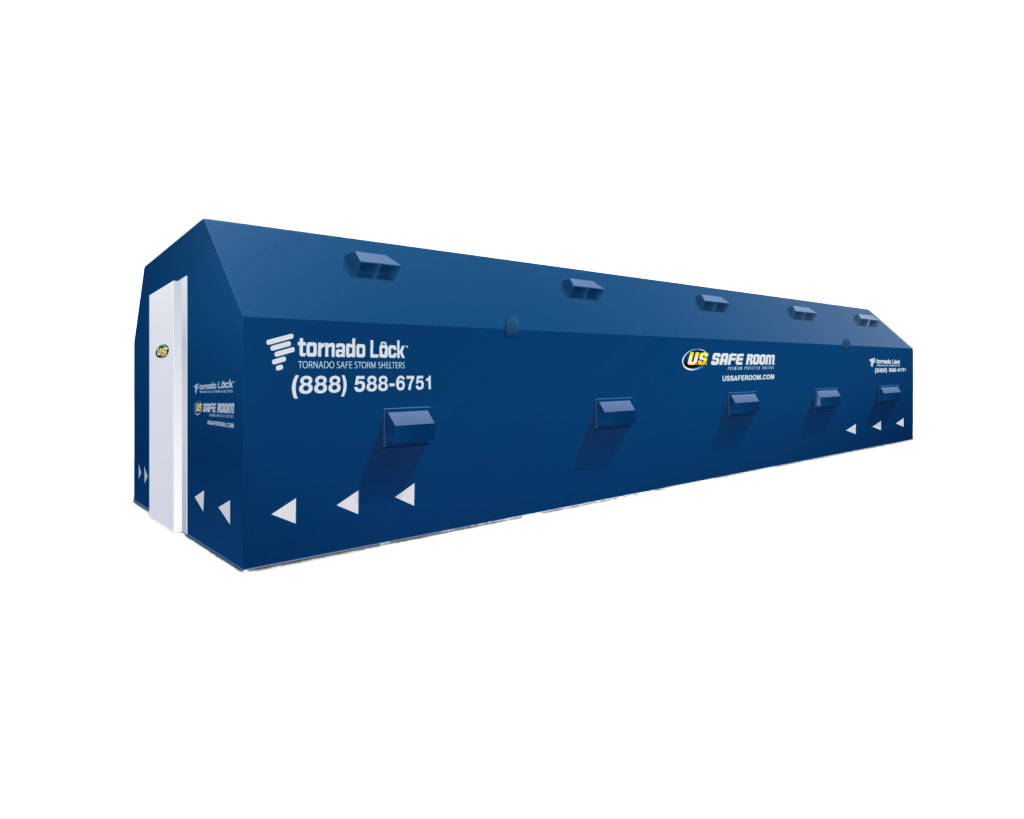Mobile homes are the last place you want to be during a tornado. With timing of the essence, thousands of tornado victims have little choice but to stay put in their mobile home to ride out the storm’s wrath. High sheering winds will easily toss around premanufactured homes with ease. The leftover carnage from a direct tornado strike to a mobile home looks more like a warzone than a natural weather phenomenon. The affordable appeal of a mobile home makes it an economical alternative for more costly construction projects. For versatility, mobile homes can fit any mold and last years to come. You can put one anywhere, and a trailer’s narrow profile makes it suitable for almost any terrain. But with this affordable incentive comes a hidden danger: mobile homes can be a deathtrap when a tornado comes barreling through the neighborhood. Don’t get us wrong. In the face of outrageously high mortgages, mobile homes give millions of Americans a clear shot at the American dream. But because mobile homes are built with cheaper construction materials than traditional stick-built homes, tornadoes with windspeeds topping 200 miles per hour will decimate any premanufactured home, regardless of the best-laid foundations. Mobile home tornado shelters can shore up safety deficiencies while adding value to your residence.
Can You Install a Mobile Home Tornado Shelter Inside Your Home?

This is a tricky question. Because you only have a few minutes to reach safety once a tornado warning is announced, logic would dictate that your tornado shelter should be built within your home or basement. But mobile homes come with an innate structural disadvantage. Lack of a stable foundation and thin interior walls makes it impossible to retrofit a panelized storm shelter into any existing room or office. Most mobile homes are engineered as static configurations with little room for flexibility. Even removing just one interior wall can make the overall unit structurally unsafe. You have to get a little creative if you want premium steel protection. An underground mobile home tornado shelter can give your family optimal premium protection without disturbing the sanctity of your home. By simply positioning your shelter’s entrance hatch in proximity to the front of back dwelling of the residence, gives property owners more than a fighting chance for safety when the next F5 tornado comes to town. We also have standalone aboveground shelters than can be bolted to a concrete pad if you reside in flood prone areas where an underground shelter would pose more harm than good.
The Changing Winds of Fate
While meteorologists continue to debate the science behind the phenomenon, one thing is for certain. Tornado Alley is migrating to the southeast. While documenting recent tornadic trends, scientists have noticed a definite uptick in severe weather in the southeast. Compounding the inherent danger of this nascent trend in disaster is geography. Most of the Deep South is inundated with heavy tree lines that sit atop rolling hillsides. Because most severe weather doesn’t roll into the southern states until after nightfall, many slumbering residents find themselves at a distinct disadvantage when the tornado sirens begin to blare. At U.S. Safe Room, we are remain constantly vigilant on pricing. Steel is never cheap, but no one should be forced to forgo lifesaving technology due to barriers in pricing. With you’re working with a tight budget, consider pooling together funds with neighbors who might find themselves in similar perilous straits. We also have venerable line of community shelters for larger mobile home parks that can save more than 100 lives. Message us today to get a free quote and consultation with a qualified building advisor. Don’t settle for inferior protection, make a lifelong investment today.
